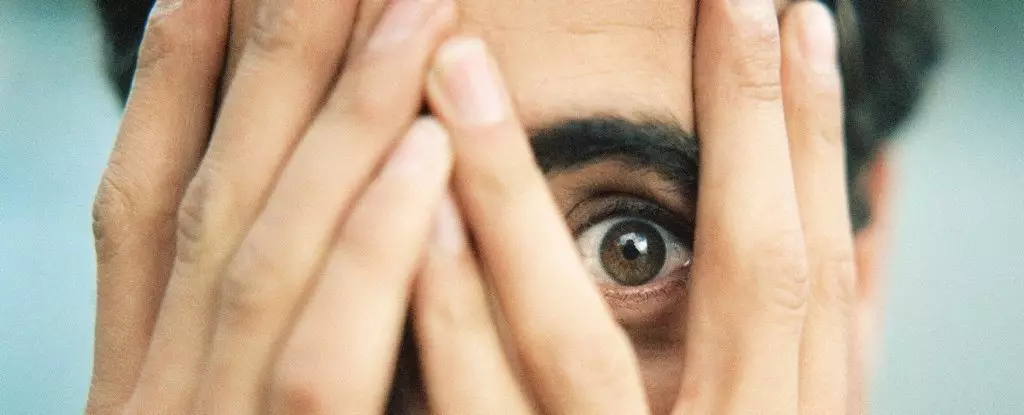In social settings, the presence of a fidgeter can feel like an unwelcome distraction. Whether it’s someone tapping their foot, drumming their fingers, or shifting restlessly in their chair, these repetitive movements can be jarring. While one might think this irritation is merely a personal annoyance, current research reveals that such responses can stem from a broader psychological phenomenon known as misokinesia. Defined as a strong adverse emotional reaction to observing another person’s repetitive movements, misokinesia affects a significant portion of the population, suggesting it is commonplace rather than an isolated issue.
Recent studies indicate that as many as one in three individuals experience some level of sensitivity to fidgeting behaviors exhibited by others. This backlash against visual stimuli, though understudied until recently, has been likened to a related disorder called misophonia—where certain sounds provoke intense irritation or discomfort. Despite their similarities, misokinesia is triggered primarily by visual stimuli rather than auditory cues.
Led by psychologist Sumeet Jaswal of the University of British Columbia, researchers embarked on an extensive investigation to delve into the nuances of misokinesia. Their study, which surveyed over 4,100 participants, sought to quantify the occurrence of this phenomenon, inquiring about its effects on individuals’ emotional well-being and social interactions. The findings were enlightening: approximately one-third of respondents reported experiencing various degrees of discomfort associated with others’ fidgeting behaviors.
These results underscore a critical point: misokinesia is not merely a quirk but a social challenge that resonates across a diverse demographic. The implications of this sensitivity ripple through daily life; affected individuals can experience heightened emotions such as frustration, anger, and anxiety, which can diminish their enjoyment in socializing, working, or even learning environments.
Interestingly, misokinesia often coexists with misophonia, yet they do not always manifest together. The variability among individuals is striking—some people display only slight discomfort with fidgeting, while others are significantly impacted. This inconsistency may offer insights into the underlying mechanisms of these conditions.
Todd Handy, another psychologist involved in the study, commented on how the emotional responses experienced by individuals with misokinesia can lead to withdrawal from social situations. It was prompted by his partner’s candid admission of feeling stressed when witnessing his fidgeting, which spurred his interest in understanding the neural responses involved.
A pivotal question arises: Why do repetitive movements provoke such intense reactions? This inquiry led researchers to explore the cognitive foundations of misokinesia. Initial attempts to correlate heightened visual attention with the sensitivity to fidgeting yielded inconclusive evidence. However, theories surrounding the neurological basis of misokinesia have taken center stage.
One compelling hypothesis posits that “mirror neurons” might play an integral role. These neurons respond both when individuals perform actions and when they observe similar actions in others. In essence, when we witness someone else fidget, our brains may mirror this activity, potentially triggering anxiety or discomfort if that fidgeting is perceived as a manifestation of underlying nervousness.
Jaswal suggests that for those predisposed to misokinesia, observing fidgeting could involuntarily awaken feelings of stress or anxiety, thereby amplifying the emotional response. This potential for empathizing, albeit negatively, introduces an intriguing dynamic within social interactions.
The exploration of misokinesia serves to highlight a significant yet often overlooked psychological phenomenon. The findings from recent studies indicate that discomfort related to others’ fidgeting is widespread and can have profound implications on social engagement and individual well-being. Acknowledging misokinesia as a legitimate social challenge can pave the way for greater awareness, fostering understanding among those who experience it and those who may not.
As Handy eloquently stated, acknowledging this phenomenon might offer some solace for those grappling with its effects: “To those who are suffering from misokinesia, you are not alone.” As researchers continue to probe the underpinnings of misokinesia, it is essential that public dialogue embraces this and similar phenomena to normalize and destigmatize the experiences of countless individuals. In understanding our responses to social stimuli—be they auditory or visual—we can foster more inclusive environments that respect and accommodate the diverse sensitivities of individuals within our communities.


Leave a Reply